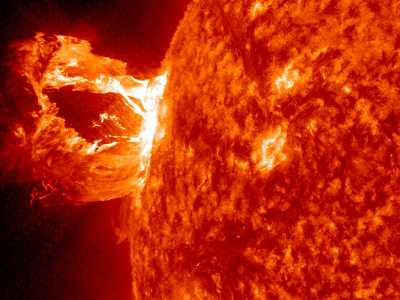Ionospheric turbulence, space weather
The sound installation takes realtime input from the Mapping Authorities space weather forecast service. This is a measure of the magnitude of ionospheric disturbances in a certain region. These kinds of disturbances are caused for example by sunstorms, and can affect all electronic communication and in extreme cases make electronic equipment break down completely. Within normal ranges, the disturbances only affect very fine measurements, like the VLBI. The effects of these disturbances are counteracted by the multi-frequency sampling technique described earlier.
For the sound installation, the ionospheric turbulence is updated every 5 minutes and the signal is used to control different parameters of all the composition modules. What I call the composition modules here are the different ways of translating the data into sound. A very basic and general description of how the ionospheric data is used to affect the sound of the installation is that more turbulence makes for more untidy music; less regular rhythm, less inclination to rhythmic synchronization, more noise in tones, broader range of values, faster leaps, and so on.
With patience, being familiar with the composition modules and how they normally sound, it should be possible to hear the ionospheric turbulence level.
For comparison, you can look up the actual data for the space weather forecast here: http://sesolstorm.kartverket.no/

